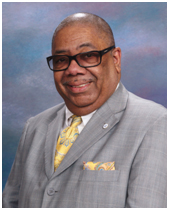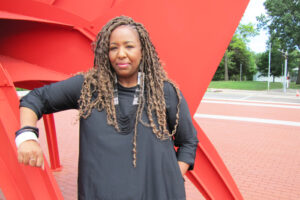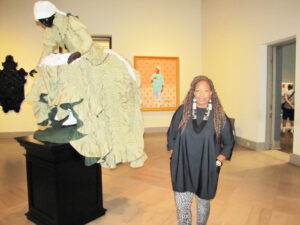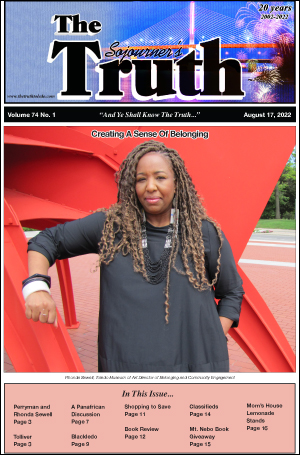
By Rev. Donald L. Perryman, Ph.D.
The Truth Contributor
Pluralism isn’t supposed to be about policing the boundaries; it’s supposed to be about breaking boundaries down and acknowledging the fluid and interactive nature of all our identities.
– Henry Louis (Skip) Gates, Jr.
The Toledo Museum of Art (TMA) knew it had to get the decision right when hiring the person to lead its new Diversity, Equity, Access, and Inclusion effort.
TMA’s goal to take the organization to another level by “putting Diversity, Equity, Accessibility, and Inclusion (DEAI) at the core of all we do,” would require a person with superstar talent.
Enter, Rhonda Sewell, Director of Belonging and Community Engagement.
She joins the world-class museum during the current “Inclusion Revolution,” where most Diversity and Inclusion statements and plans are more concerned with optics than meaningful change.
Sewell, however, is committed to achieving authentic, actionable, and inclusive leadership throughout all levels of the Toledo Museum of Art, one of the top museums in the nation.
I talked with Sewell about TMA and the challenges of working in the Diversity and Inclusion space.

Perryman: Please talk a bit about your journey.
Sewell: My journey, especially in Toledo, started at the tender age of about 21. I was studying international journalism at the City University of London in England, and my professor happened to be The Blade newspaper’s European Bureau Chief. It’s a weird connection, but that brought me to Toledo, where I came of age as a journalist at the right time.
Perryman: What came next?
Sewell: I had a great, award-winning career at The Blade but left in 2006 after nearly 18 years. I went on to the Toledo Lucas County Public Library, starting out in their marketing department in charge of media relations. I became manager of governmental and external affairs and was later promoted to a director, which is the highest level you can attain at the library.
I stayed there for 15 years, and then, was invited to apply to my current position at TMA.
Perryman: What brought you specifically to the Toledo Museum of Art?
Sewell: I read the job description for Director of Belonging and Community Engagement. I did a lot of diversity and inclusion work in the community, on boards and chairing diversity committees, and I didn’t envision myself going to a higher position at the library.
TMA said, “We know you’ll probably never leave the library. But nevertheless, we’re inviting you to apply.” So, I applied, got the job, started last April, and it’s been one heck of a journey.
Perryman: Please talk about the intersection of art and culture, and DEAI.
Sewell: In our strategic plan, we have looked at focusing heavily on the two-mile radius that surrounds the museum. The fascinating thing about the museum is it’s positioned in the middle of neighborhoods. We’ve identified five distinct neighborhoods that encompass that two-mile radius, and what we’ve discovered is that many of these locations, as you know, are disproportionately underserved neighborhoods. In informal surveys, we found that while many residents have lived in Toledo all their lives, some have never stepped foot in the museum.

That wasn’t surprising, but at the same time, it was sad that we have a world-class museum that some people either didn’t have an interest in, felt unwelcomed to, or felt as if they never were invited. I assume that some never felt a sense of belonging.
Perryman: What happened? In the 1960s, when I was a student at Jones Leadership Academy, it was then Gunckel School; we regularly walked with our teachers to the art museum and had regular visits. I know even my children, who are grown now, took classes on the weekends at TMA. So, what happened? Was there a disconnect?
Sewell: No, I don’t think that. We have always been on point with the family center and the educational side at the Toledo Museum of Art. When you come down to our family center, you see every race, every color, you see lots of African American kids, you see lots of Arab kids, you see lots of white kids, you see Asian, you see everybody. We call it now learning and interpretation, but it’s education.
Museums globally, including the Toledo Museum of Art, have long struggled with representation in their collections and exhibitions, a strategic objective at TMA that we refer to as broadening the narrative of art history. A perfect example of TMA holding our organization accountable was the reinstallation of our Cloister Gallery. It once had columns and red paint on the walls depicting art and artifacts from the Middle Ages, but, now it is presented from an expanded range of the cultural heritage of the Middle Ages.
We decided with our new strategic plan that we will look at art history not just from a Eurocentric point of view. We know all about the old masters. We know about Van Gogh, Picasso, Monet, and all of the amazingly talented male artists we studied in art history, but there’s more to learn and see about art from a global lens.
Perryman: But we also need to know about Jacob Lawrence and Romare Bearden and others.
Sewell: Thank you! There’s also Asian art and Islamic art and African art and African American art, and what about artists who were/are women or LGBTQIA+? Even dating back to the 15th-16th Century, where are their stories being told? Historically, most art museums were created by locals who were white businessmen like Edward Drummond Libbey. He was a glass magnate who put up the funding with his wife, Florence Scott Libbey.
Now, I will say when I did some research because I’m a journalist, I like looking back at newspapers. I found a 1916 or 1917 Blade article about the museum, which said ‘built by the people for the people.’ I think the Libbeys have always had a vision of how the museum would be for everybody. But, somehow, our museum did not always articulate the original intent that the people built this for the people, like that headline read then.
Perryman: As a Black woman, please talk about the specific challenges and opportunities of working in this space just two years from the George Floyd incident. What is it like when many people in this space face battle fatigue?
Sewell: I’m so glad you asked that question. So, since George Floyd, many roles like mine have suddenly been created. There are diversity equity access jobs everywhere at organizations, and many are genuinely intent on changing systems. Others might be more intent on window dressing.
I know that my reputation and dogged determination to change systems are so steeped in who I am. I was meticulous in selecting the next organization I would work for. If they were not faithful to system change, I would just move on to something else or remain at the library.
Perryman: That’s being true to the game.
Sewell: The rumor in DEAI work is “don’t stay in it for more than five years because you will have battle fatigue.” Make sure you train up the next person because it is hard to find out that people don’t want the change or say they want the change but really want a window dressing.
Also, answering the why of why we’re doing it is essential. Is it obligatory why we’re creating these roles? Some people can say yes, that’s why most organizations are doing it, or is it real systems change? In my last year and three months, I see that this organization has really committed to systems change.
Perryman: So, at the Toledo Museum of Art, with Rhonda Sewell working on this and Adam Levine at the helm, is the TMA Belonging plan and DEAI a moment or a movement?
Sewell: Definitely a movement, or else I would not be involved.
Perryman: And why?
Sewell: Well, it’s all I stand for. It’s the core of who I am as a servant leader in this community. I have worked carefully at crafting a reputation for community involvement, systems change, and diversity and inclusion work. If I were doing a moment, I’m not that one-dimensional. I’m just a professional. I would never try to do that, but it’s such a great question to ask because, as I did at the library, I want the systems change we’re working on to be longstanding. One that we’re working on so current generations can see it, that also, my grandchildren can see the changes, and that same gallery that I talked about earlier is just one example.
We shut down the whole medieval Cloister Gallery and disrupted it positively. We kept the stained glass Middle Ages Christian viewpoint. We did all of that, but guess what we did further? We also added Islamic treasure boxes from the medieval period because the medieval period doesn’t just mean Eurocentric. We added Ethiopian carvings and stone carvings. We added Chinese art. We added a global perspective that now says when I go in there with my family, I am now represented in a way that maybe I wasn’t prior. Art history is global. It is not just one perspective.
This administration of senior leaders is now incorporating more of what the community wants. What internal staff wants and part of that narrative is ensuring that people are seen and feel whole when they come in here. We think the old masters are important, but we also believe indigenous art is essential. We also feel that artwork by women is important. We also believe that the people you mentioned, Jacob Lawrence and Kehinde Wiley are important. We want to be known for our quality but also for nurturing that sense of belonging, not only in how you’re treated when you come in here but also in the art you see on our walls or the sculptures you see. It’s more of a perspective that represents the community.
So now we’re telling a whole different story with our docents and not telling just one story anymore. That’s real change and not window dressing.
Perryman: Do you see the role of art in social justice and particularly contemporary issues?
Sewell: Yes, yes and yes.
Perryman: Can you elaborate?
Sewell: So I’m about to venture to Montgomery, Alabama, next weekend to do the opening exhibition moderating of an exhibit they have called ‘A Sight of Struggle.’ It’s looking at Black artists and their viewpoint on anti-Black violence in America over the past 100 years. So deep, triggering, powerful, that’s social justice.
The Montgomery Museum of Fine Art has done an outstanding job not being afraid to present this work. But also exceptional work involving the community to say how we address subsystems change, not only at our museum but in our community. So, they’ve got the community involved to see if it’s even appropriate to exhibit because lynchings are triggering for Black people.
Perryman: And speaking of triggering, I raised that question because of the Justice Department’s recent federal indictment of police in Louisville, Kentucky, in the death of Breonna Taylor. That is relevant to our people and an opportunity for art to play a role.
Sewell: Look at what the Speed Art Museum in Louisville and my counterpart there did with Breonna Taylor’s mother. She brought an entire exhibit about Breonna called “The Promise” there that was fresh because Louisville was still healing. Her mom said she might not be an art history major. Still, she knew how powerful her daughter’s image and other artwork in this social justice movement would be to start a dialogue to begin healing sessions.
There’s work to do in the museum field, and we see the link between art and George Floyd and the killings, the deaths even right here in Ohio that continue. I think we see how art plays that role in starting to talk about issues like religion, social justice, and gun control.
Art is subjective, but we can’t be afraid to tackle hard questions and viewpoints.
Perryman: How do you make yourself heard at TMA in the right way at the right time? How do you navigate the challenge of speaking up and speaking out about change at TMA?
Sewell: It’s not a cakewalk, that’s for sure. But, research says that if you do not have your top person’s support, commitment, dedication, and advocacy, you can forget trying to incorporate systems change. My director and the board have demonstrated that so far, so good.
Also, you’ll be happy to know that all of the DEAI folks in town look pretty much like you and me, not all of them, but the majority. We have all formed an informal group, so we get together monthly to share best practices and talk about systems change beyond just our organizations and in this community.
But here’s the most significant answer: we are so committed here at TMA to change that DEAI is now tied into performance for every single person.
Perryman: How will you know if you are moving the needle?
Sewell: We have projected strategic measurables in the Belonging plan right now. We will see if we met those projected strategic objectives at the end of the fiscal year, June 30th of ’23. If we have not, it’s back to the drawing board. We are truly going to be data-driven. We’re also making sure that we’re not so data-driven that we’re not hearing people and not hearing what they’re saying.
So, we’re going to create community advisory groups through our community gallery manager. We don’t want to make all the decisions ourselves because I’m going back to that 1916-1917 Blade article that said the museum was supposed to be built by the people for the people. So, it can’t just be us internally driving our mission.
Perryman: Right, it can’t just be for some people.
Sewell: No, it has to be for anyone. The Toledo Museum of Art is for anyone.
Contact Rev. Donald Perryman, PhD, at drdlperryman@enterofhopebaptist.org

